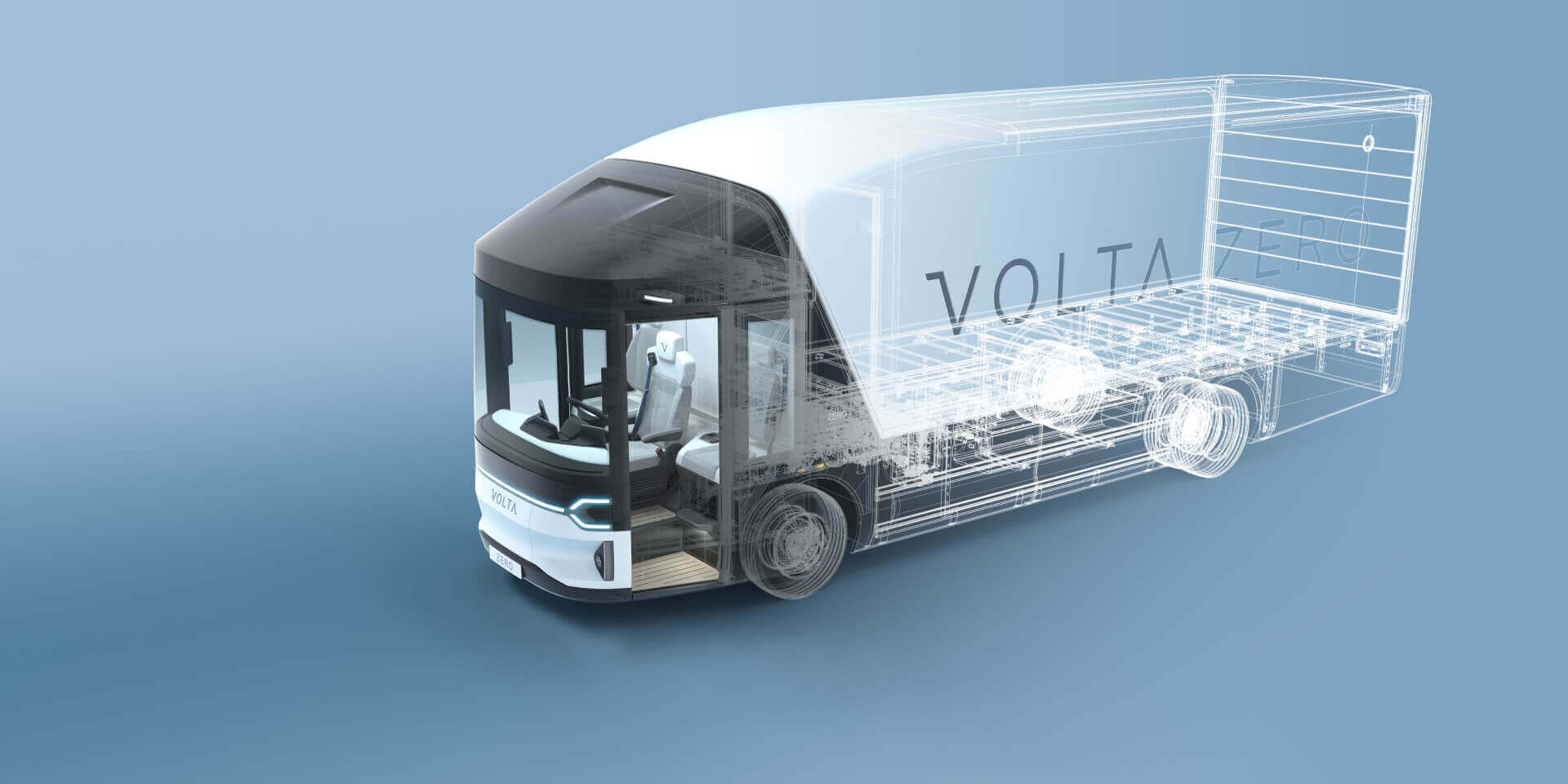You have designed the first purpose-built full electric large commercial vehicle – where did you start with the design process?
“As with all of our projects, the starting point is the user. In this case, it was the driver, optimising their position. So, we designed the truck from the inside out, firstly positioning the driver exactly where we wanted them to be, then building the cabin architecture around them. Finally, we designed the exterior, with a form language expressing the values of the brand.”
What were your priorities with the design concept?
“We had three key priorities where we decided the truck would be best in class – safety, efficiency, and driver environment. Safety for both the driver and vulnerable road users like cyclists and pedestrians was created by maximising the direct visibility and having the driver’s eye height at 1.8m from the ground, matching the eye line of those outside the vehicle for ease of visual communication. We also wanted to improve safety by reducing cognitive overload, simplifying the user interface of the displays. Efficiency was created by positioning the driver in a central driving position, with fast opening sliding doors on both sides of the vehicle. This allows quick and easy entry and exit for the driver either side of the cabin which is essential in tight urban areas. The best driver environment is created by a simple, clean, light, and spacious interior, and the use of natural colour materials and finishes to create a premium, calming yet purposeful environment.”
What design and packaging opportunities did the removal of the ICE give you?
“Removing the internal combustion engine from the cabin and placing the electric drivetrain in the ladder chassis beneath the body gave us almost complete freedom for the cabin design and architecture. In a traditionally designed truck, to minimise the cabin length, the driver is positioned above the engine placing them extremely high above the road. This creates safety issues with blind spots, and also makes the entry and exit hazardous, especially in urban delivery where a driver can make up to 60 deliveries or more in a day. We were able to completely change the cabin layout, creating a new type of vehicle – one which you could say is almost a hybrid between a bus, that is naturally designed to be driven safely in inner city environments, and a truck. With the Volta Zero, we have the driver visibility and safety from the front end of a bus, but with the rear load carrying capabilities of a truck.”

Did you investigate any design and packaging opportunities that turned out not to work?
“We were lucky to work with some great engineers from Prodrive to resolve some of the issues that radically changing the vehicle architecture created. For example, the structural challenges of locating the driver below the ladder chassis, and the need to integrate independent suspension. There are always compromises in defining the design but in this case, we were able to realise our design vision without any changes that diluted the key priorities of the design – safety, efficiency, and the best-in- class driver environment.”

The Volta Zero introduces the work’s first use of a natural flax and biodegradable composite resin for the first time in exterior body panels – how did this come about and is it important?
“Volta Trucks’ Co-Founder and Chief Technology Officer, Kjell Waloen, asked us to look into natural fibre composites and coincidentally, I had been talking with Adam Barmby from BAMD , an expert in the manufacture of pre-impregnated natural fibre composite parts with biodegradable resins. He turned out to be the perfect fit for this project. In terms of performance, natural fibre composites sit between a carbon fibre and a more traditional glass fibre, but they have a much better elasticity, meaning that they can withstand significant impact and return to their original shape without cracking. For a truck operating in inner city environments, this is extremely useful as it means the body parts will not have to be changed so often when the inevitable bumps and bashes that a truck endures on a daily basis happen.”

The most noticeable design difference between the Volta Zero and a conventional truck is the central driving position. How did this come about and what are the benefits?
“Co-Founder of Volta Trucks, Carl-Magnus Norden, wanted a driver-focussed truck. One of the reasons for this is because there is a shortage of drivers and high attrition rates in this size of vehicle. After our in-field trials and discussions with fleet managers, we mocked up multiple layout variants of the cabin and analysed these with our virtual reality equipment. It soon became evident that the central driving position had fewer blind spots and better all-round visibility. It also gave easier entry and exit from both sides and created a really spacious and welcoming environment for the driver. We then created a driver simulator to see what it was like to drive the truck from the central position. This was followed by a physical one-to-one scale mock-up to validate the ergonomics of the cabin. Now that we have the physical vehicles, driving the Volta Zero from its central driving position has proved to be intuitive, and the first test drivers became comfortable with the driving position very quickly.”

